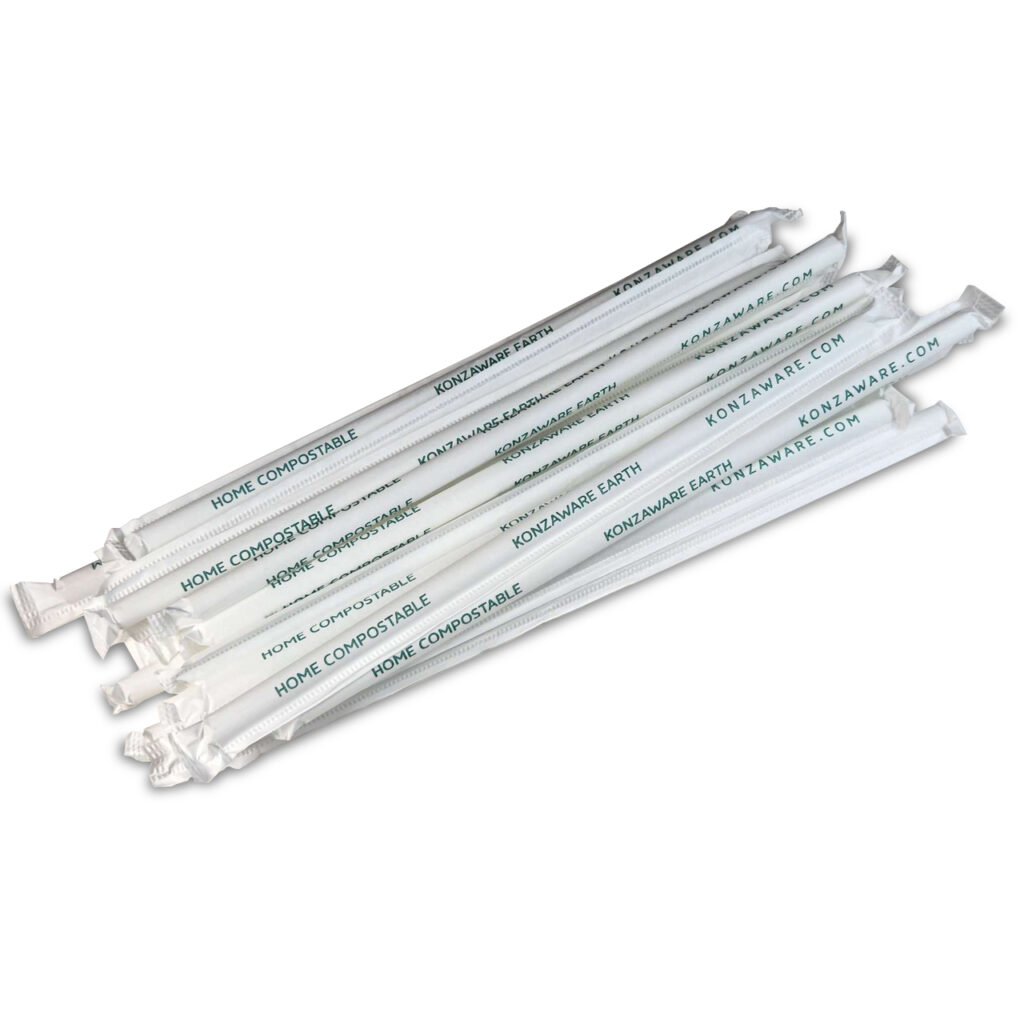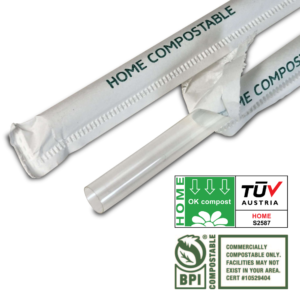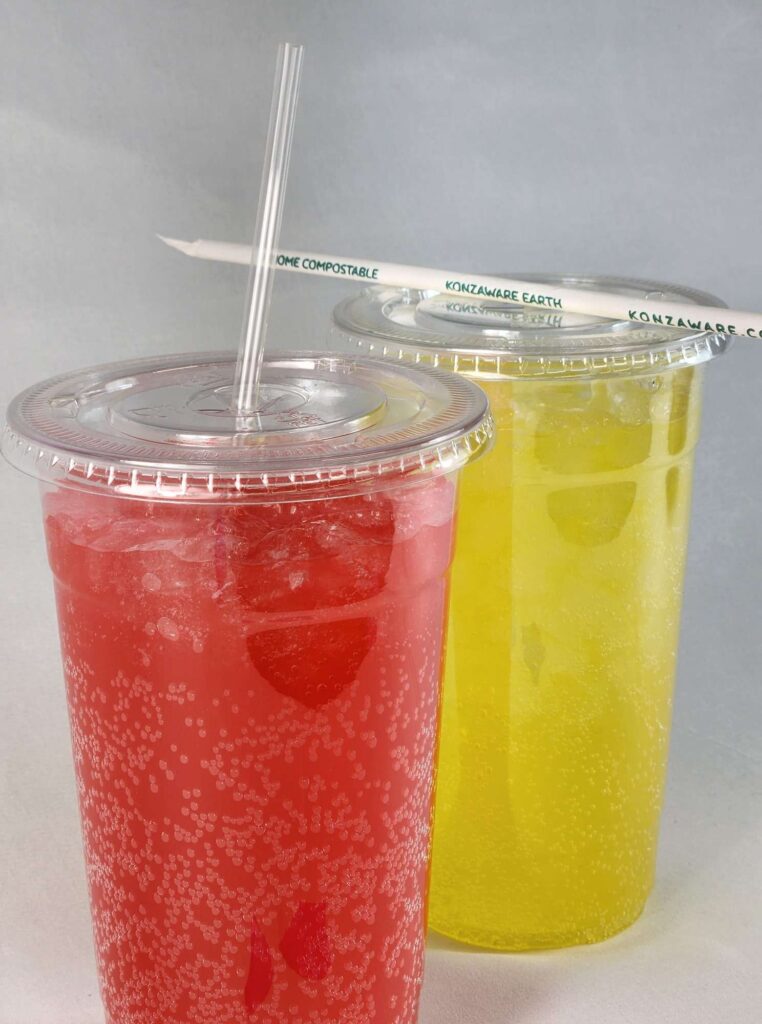Introduction
In recent years, there has been a growing concern about the impact of plastic waste on the environment. One of the most significant contributors to this problem is single-use plastic straws. As a result, many companies and individuals have turned to biodegradable straws as a more eco-friendly alternative. However, there is a lot of confusion and misinformation surrounding the topic of biodegradable straws. Are they really biodegradable? Are they truly environmentally friendly? In this article, we will explore the truth about eco-friendly straws and provide you with the information you need to make an informed choice. We will discuss what biodegradable straws are, how they work, and whether or not they are truly biodegradable. We will also examine the environmental impact of eco-friendly drinking straws and provide you with alternatives to consider. Additionally, we will provide you with information on where to buy biodegradable straws and how to properly dispose of them. By the end of this article, you will have a better understanding of biodegradable straws and be able to make an informed choice about whether or not they are the right choice for you.
What are Biodegradable Straws?
Biodegradable straws are a type of straw that is designed to break down naturally over time. Unlike traditional plastic straws, which can take hundreds of years to decompose, biodegradable straws are made from materials that can be broken down by natural processes, such as bacteria and fungi.
There are several different types of materials that can be used to make biodegradable straws, including paper, bamboo, and certain types of plastics. Some eco-friendly drinking straws are also compostable, which means that they can be broken down into nutrient-rich soil when they are disposed of properly.
One of the key benefits of biodegradable straws is that they are much better for the environment than traditional plastic straws. Plastic straws are a major source of pollution, and they can harm wildlife and ecosystems when they are not disposed of properly. Biodegradable straws, on the other hand, are designed to break down naturally, which means that they do not contribute to pollution in the same way.
Another benefit of eco-friendly straws is that they are often more sustainable than traditional plastic straws. Many compostable straws are made from renewable resources, such as bamboo or paper, which means that they are more environmentally friendly than plastic straws, which are made from non-renewable resources.
Overall, biodegradable straws are a great alternative to traditional plastic straws. They are better for the environment, more sustainable, and can be disposed of in a way that is much less harmful to the planet. If you are looking for a way to reduce your environmental impact, switching to biodegradable straws is a great place to start.

How Do Biodegradable Straws Work
Biodegradable straws are made from materials that can break down naturally over time, such as plant-based materials like cornstarch or paper. These materials are designed to decompose in the environment, unlike traditional plastic straws which can take hundreds of years to break down.
When biodegradable straws are disposed of, they begin to break down through a process called biodegradation. This process occurs when microorganisms, such as bacteria and fungi, break down the materials into smaller pieces. These smaller pieces can then be consumed by other organisms, such as worms and insects, and eventually become part of the soil.
The speed at which eco-friendly drinking straws break down depends on a variety of factors, such as the type of material used, the temperature and humidity of the environment, and the presence of microorganisms. In general, eco-friendly straws can take anywhere from a few weeks to several months to fully decompose.
It’s important to note that not all biodegradable straws are created equal. Some may be labeled as “compostable,” which means they can break down in a commercial composting facility. Others may only be able to break down in certain conditions, such as high temperatures or specific types of soil.

Overall, biodegradable straws can be a more environmentally friendly alternative to traditional plastic straws. However, it’s important to do your research and choose a product that is truly biodegradable and will break down in a reasonable amount of time. Additionally, it’s important to properly dispose of sustainable drinking straws to ensure they can break down as intended.
Are biodegradable straws really biodegradable?
The short answer is yes, biodegradable straws are designed to break down over time and eventually decompose into natural elements. However, the long answer is a bit more complicated.
Firstly, it’s important to note that not all eco-friendly drinking straws are created equal. Some are made from plant-based materials like cornstarch or bamboo, while others are made from biodegradable plastics. The latter may sound like an oxymoron, but these plastics are designed to break down faster than traditional plastics and are often made from renewable resources like corn or sugarcane.
However, the biodegradability of these materials depends on a variety of factors, including temperature, moisture, and the presence of microorganisms that can break down the material. In ideal conditions, sustainable drinking straws can break down in a matter of months. But in less-than-ideal conditions, like a landfill where there is little oxygen or sunlight, biodegradable straws may take much longer to decompose.
Another issue with eco-friendly straws is that they may not be as environmentally friendly as they seem. For example, some biodegradable plastics require high temperatures to break down, which means they can’t be composted at home and must be sent to a specialized facility. Additionally, some biodegradable materials may release harmful chemicals as they break down, which can be harmful to the environment.
So, while biodegradable straws are a step in the right direction toward reducing plastic waste, they are not a perfect solution. It’s important to consider the specific materials used in the production of biodegradable straws, as well as the conditions required for them to break down properly. And, as always, reducing our overall consumption of single-use items like straws is the best way to reduce our impact on the environment.
The Environmental Impact of Biodegradable Straws
While eco-friendly straws may seem like a more eco-friendly alternative to traditional plastic straws, it is important to consider their impact on the environment.
 One of the main concerns with biodegradable straws is that they may not actually biodegrade as quickly or completely as advertised. Some eco-friendly straws require specific conditions, such as high temperatures or industrial composting facilities, in order to break down properly. If these conditions are not met, the straws may still end up in landfills or oceans, where they can contribute to pollution and harm wildlife.
One of the main concerns with biodegradable straws is that they may not actually biodegrade as quickly or completely as advertised. Some eco-friendly straws require specific conditions, such as high temperatures or industrial composting facilities, in order to break down properly. If these conditions are not met, the straws may still end up in landfills or oceans, where they can contribute to pollution and harm wildlife.
Additionally, the production of eco straws still requires resources and energy and may contribute to greenhouse gas emissions. While they may be a better option than traditional plastic straws, it is important to consider the full life cycle of the product and its impact on the environment.
It is also worth noting that biodegradable straws are not a solution to the larger issue of plastic waste. While they may be a helpful alternative in some situations, reducing overall plastic consumption and properly disposing of all plastic products is crucial in addressing the environmental impact of plastic pollution.
Overall, while biodegradable straws may seem like a more eco-friendly option, it is important to consider their impact on the environment and use them in conjunction with other efforts to reduce plastic waste. By making informed choices and taking steps to reduce our overall plastic consumption, we can work towards a more sustainable future.
Alternatives to Biodegradable Straws
While eco-friendly straws may seem like a great solution to the plastic straw problem, there are actually several alternatives that may be even more environmentally friendly.
1. Reusable straws: One of the best alternatives to biodegradable straws is simply to use a reusable straw. These can be made from materials like stainless steel, glass, or silicone, and can be used over and over again. While they may require a bit more effort to clean, they are a great way to reduce waste and save money in the long run.
2. Paper straws: Another option is to use paper straws, which are biodegradable and compostable. While they may not be as durable as plastic or sustainable drinking straws, they are a great option for single-use situations like parties or events.
3. Edible straws: For a truly unique and eco-friendly option, consider using edible straws made from materials like pasta, rice, or even seaweed. These straws can be eaten after use, eliminating the need for disposal altogether.
4. No straw: Of course, the simplest alternative to eco straws is to simply not use a straw at all. While this may not be practical in all situations, it is a great way to reduce waste and minimize your environmental impact.
Ultimately, the best alternative to biodegradable straws will depend on your individual needs and preferences. However, by considering these options and making an informed choice, you can help reduce the amount of plastic waste in our oceans and landfills.
Where to Buy Biodegradable Straws
If you’re looking to purchase biodegradable straws, there are a few options available to you. Many eco-friendly stores and online retailers now carry biodegradable straws, so you can easily find them with a quick search. Here are some places to consider:
1. Eco-friendly stores: Many stores that specialize in eco-friendly products now carry eco-friendly straws. These stores may be local to your area or online. Some popular eco-friendly stores include The Package Free Shop, EarthHero, and Package Free.
2. Online retailers: There are many online retailers that specialize in eco-friendly products, including biodegradable straws. Some popular options include Amazon, Biome, and The Better Packaging Co.
3. Direct from manufacturers: Some manufacturers of sustainable drinking straws sell their products directly to consumers. This can be a good option if you want to buy in bulk or if you’re looking for a specific type of biodegradable straw. A popular manufacturer is Great Paper Straws.
When purchasing biodegradable straws, it’s important to look for certifications that indicate the product is truly biodegradable and environmentally friendly. Look for certifications such as the Biodegradable Products Institute (BPI) certification or the ASTM D6400 certification.
It’s also important to consider the type of sustainable drinking straw you’re purchasing. Some biodegradable straws are made from plant-based materials such as cornstarch or bamboo, while others are made from biodegradable plastics. Plant-based options are generally considered more environmentally friendly, as they break down more easily and don’t contribute to the plastic pollution problem.
Overall, there are many options available for purchasing biodegradable straws. By doing your research and choosing a reputable retailer or manufacturer, you can feel confident that you’re making an environmentally friendly choice.
How To Properly Dispose of Eco-Friendly Straws
While biodegradable straws are marketed as an eco-friendly alternative to traditional plastic straws, it is important to understand that they still require proper disposal to minimize their impact on the environment.
Unlike traditional plastic straws, eco-friendly straws are designed to break down naturally over time. However, this process can only occur under specific conditions, such as exposure to sunlight, oxygen, and moisture. If biodegradable straws are not disposed of properly, they may end up in landfills where they are unlikely to break down as intended.
To properly dispose of biodegradable straws, it is recommended to compost them. Composting is a natural process that breaks down organic materials into nutrient-rich soil. Biodegradable straws can be added to a compost bin along with other organic waste, such as food scraps and yard trimmings. However, it is important to note that not all compostable materials are created equal, and some may require specific conditions to break down properly.
If composting is not an option, eco-friendly drinking straws can also be disposed of in the trash. However, it is important to check with local waste management facilities to ensure that they are able to properly dispose of biodegradable materials. Some facilities may not have the necessary infrastructure to compost or break down biodegradable materials, which could result in them ending up in landfills.
In addition to proper disposal, it is also important to reduce the overall use of straws. While biodegradable straws may be a better alternative to traditional plastic straws, they still require resources to produce and transport. By reducing the use of straws altogether, we can minimize our impact on the environment and reduce the need for disposable products.
In conclusion, while biodegradable straws may be marketed as an eco-friendly alternative to traditional plastic straws, it is important to understand that they still require proper disposal to minimize their impact on the environment. By composting or properly disposing of biodegradable straws, we can ensure that they break down naturally and do not end up in landfills. Additionally, by reducing our overall use of straws, we can further minimize our impact on the environment.
Conclusion: Making An Informed Choice
With the increasing concern for the environment, many people are looking for ways to reduce their carbon footprint and make eco-friendly choices. Biodegradable straws seem like a great option, but are they really the best choice?
The truth is that not all biodegradable straws are created equal. Some are made from materials that break down quickly and easily, while others may take years to decompose or require specific conditions to do so. Additionally, some biodegradable straws may release harmful chemicals or microplastics as they degrade, which can have negative impacts on the environment and human health.
Despite these concerns, biodegradable straws can still be a better option than traditional plastic straws, which can take hundreds of years to decompose and contribute to the growing problem of plastic pollution. However, it’s important to choose eco-friendly drinking straws that are certified by reputable organizations and to dispose of them properly to minimize their environmental impact.
The article also explores alternatives to biodegradable straws, such as reusable straws made from materials like stainless steel or bamboo. These options may require a larger upfront investment, but can ultimately be more cost-effective and sustainable in the long run.
Finally, the article provides information on where to buy sustainable drinking straws and how to properly dispose of them. It emphasizes the importance of choosing reputable suppliers and avoiding greenwashing, as well as following local waste management guidelines to ensure that biodegradable straws are disposed of in a way that minimizes harm to the environment.
Overall, the conclusion of the article encourages readers to make an informed choice about using biodegradable straws, taking into account their environmental impact and potential drawbacks. By weighing the pros and cons and considering alternatives, individuals can make choices that align with their values and contribute to a more sustainable future.



